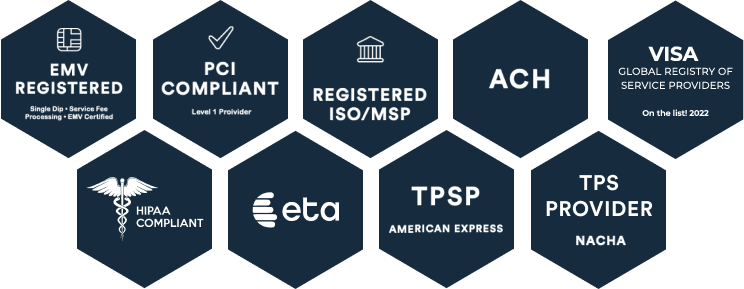With the ever-growing shift toward digital transactions, the need for governments to implement more extensive front- and back-end system integration is clear. The presence of outdated legacy and manual, error-prone payment processing systems only underscores this reality.
Government enterprise resource planning (ERP) payment systems arise to confront these challenges. Here is everything you need to know about the benefits and challenges of ERP payment systems.
What Is an ERP Payment System?
An ERP payment system is a critical component of modern transactions. These systems are equipped to handle a range of financial activities, including invoicing, payroll management, vendor payments, and more. When integrated into a single platform, ERP payment systems help improve financial accuracy, efficiency, and transparency within an organization.
At its core, ERP payment systems serve as specialized, finance-focused components within an enterprise’s all-encompassing ERP software suite, which includes various modules to streamline and optimize business operations. Its key features can include:
- Secure payment processing
- Expense tracking
- Integration of multiple payment methods
- Real-time financial data tracking
- Reporting capabilities
These systems can be crucial for automating and simplifying financial processes for government agencies, particularly to reduce manual errors and produce accurate insights into an agency’s financial health.
The Evolution of ERP Payment Systems
ERP payment systems can be traced back to the evolution of enterprise resource planning itself. Earlier versions were called material resource planning (MRP) systems, which focused primarily on manufacturing management processes and inventory control.
As businesses grew more complex, the need arose for a broader, integrated solution that could manage more components. This marked the emergence of modern ERP systems, which encompass several functions such as financial, customer service, and human resource capabilities.
Limitations of Legacy Payment Systems
Before ERP payment systems, organizations relied on a patchwork of legacy software and manual processes to handle financial transactions. Often characterized by isolated data silos, these systems were highly limited in their ability to offer real-time financial data and user control.
In short, payment processes were time-consuming, fragmented, and prone to human error. Standalone payment terminals and manual data entry were the norm, leading to inefficiencies and potential errors.
The Development of Integrated ERP Payment Systems
Integrated ERP payment systems emerged as a response to changes in technology and consumer behavior. With the rising prevalence of eCommerce and online transactions, physical payment terminals and manual payments gave way to new, digitally driven solutions.
These ERP payment solutions use payment gateways as a virtual bridge between an organization’s central financial hub and consumer payment options. These gateways are more convenient on the front end, facilitating secure transactions and offering greater choice and flexibility in how payments are made, tracked, and reported for all parties involved.
This technology powerfully shapes how government organizations manage their finances, helping them remain adaptable and interconnected in the modern digital landscape.
Key Benefits of an ERP Payment System
From streamlined processes to enhanced citizen convenience, ERP payment systems offer a multitude of benefits.
Standardization and Optimization of Back-Office Processes
ERP payment solutions ensure that financial transactions follow consistent procedures, effectively streamlining operations and promoting efficiency in an agency’s financial management.
Enhanced Impact with Payment Integration
Within a larger ERP system, integrated payment solutions can enhance the impact of an organization’s financial operations. By facilitating greater cohesion within the ERP system, consolidated processes lead to gains in overall financial efficiency.
Increased Constituent Convenience
These systems provide constituents with even more ways to pay, catering to diverse payment preferences. Single-click payment portals further improve and simplify the payment experience.
Greater Data Security
ERP payment systems prioritize regulating and protecting sensitive payment data with compliance and security measures. This instills trust in both government financial teams and their constituents, helping to ensure payment information remains safe and secure.
Real-Time Invoice and Financial Tracking
These systems offer real-time tracking capabilities for payments, invoices, and other transactions. Instantaneous visibility helps agencies easily monitor transactions, creating a sense of transparency.
Streamlined Collections
The availability of multiple payment options within an ERP system can powerfully accelerate the collections process. With multiple payment options available, citizens can choose the best method for them, leading to improved cash flow.
Minimized Fees and Costs
ERP payment systems help organizations minimize transaction fees and processing costs for both sides of the transaction. By optimizing payment processes, payment-related expenses are more efficient, leading to significant savings over time.
Key Challenges of an ERP Payment System
Though implementing an ERP payment system brings numerous advantages, it also comes with a set of challenges an organization may need to address.
Compliance Requirements
Financial regulations are complex and often subject to change. Government organizations must stay current with these regulations and ensure their ERP payment system remains compliant. Unless your system takes on the heavy lifting, this requires ongoing effort and resources to avoid penalties.
Cybersecurity and Fraud Risk
As payment processes migrate from manual to digital platforms, there is a heightened risk of fraud and cyber attacks. If not well-defended, security breaches with the ERP system can compromise financial data. Robust cybersecurity measures are critical to mitigate this risk and protect against a potential breach.
Resource Investment for Seamless Integration
While the result of a successful implementation is a streamlined ERP payment system within an operational ecosystem, integration is an often resource-intensive endeavor. Seamless integration requires skilled personnel, time, and money. Government agencies must carefully plan and allocate resources for a smooth integration.
Pressure to Match Consumer-Level Expectations
In the modern digital age, constituents have grown accustomed to a seamless, user-friendly digital payment experience. This puts pressure on government agencies to provide payment experiences that mirror the ease and convenience of consumer-level online transactions. This can be challenging and require investments in user experience design and technological enhancements.
Government ERP Payment Systems Integrate with CORE
At CORE, our automated payment solutions revolutionize the government payment process. CORE payment gateways address many common challenges of integrating with modern ERP payment systems, with features tailored to government needs.
Our payment gateways cultivate a secure, efficient, and transparent financial landscape for both your citizens and your team. Leveraging innovation and streamlined operations, these key features enhance the payment process for a better, more secure experience.
1. PCI-Compliant Software
Ensuring the security of payment transactions is paramount in any payment system. CORE’s PCI-compliant software is designed to meet rigorous security standards to handle digital transactions while maintaining the trust of citizens and the safety of their payment data.
2. Automated Payment Reconciliation
Payment reconciliation can be time-consuming and prone to errors. Automated payment reconciliation streamlines this task to offer real-time visibility and efficient resource management to ensure payments are processed promptly and accurately.
3. Integrated Payment Solutions
CORE payment solutions integrate seamlessly within existing government systems and workflows, eliminating the need for manual data entry and multiple platforms. Integrated into an ERP system, CORE’s solutions enhance operational efficiency for government staff while providing a user-friendly experience for citizens.
4. Enhanced Citizen Engagement
For government organizations, citizen engagement is a crucial component of service delivery. CORE payment solutions prioritize convenient payment options, user-friendly interfaces, and accessible payment portals tailored to citizen preferences. Organizations can help citizens engage with government services by offering convenient payment options.
Modernize Your Government ERP Payment System
ERP payment solutions offer a streamlined portal for governments and their constituents in a comprehensive, unified system. These flexible, integrated systems can enhance the flow of revenue, data security, enhanced citizen convenience, and improved tracking and reporting capabilities. CORE’s ERP payment solutions are uniquely tailored to meet government financial needs.






